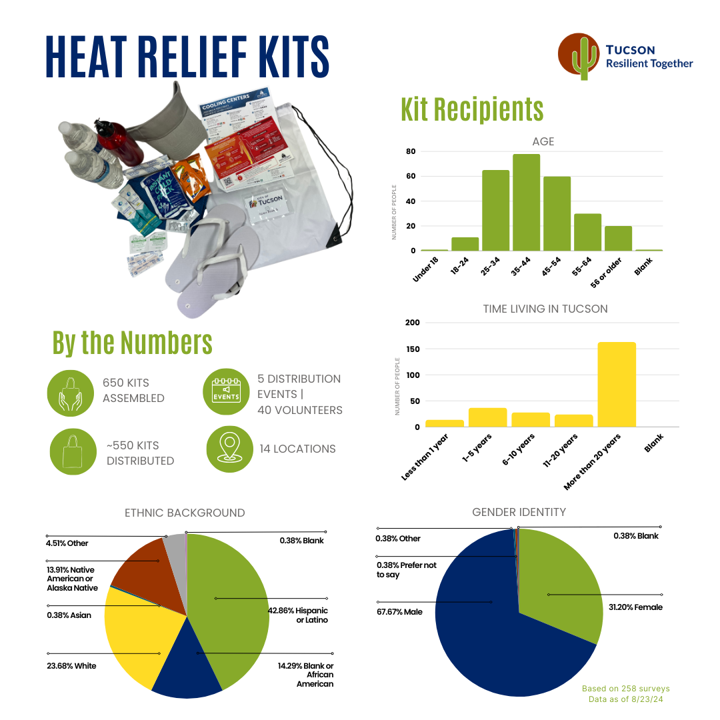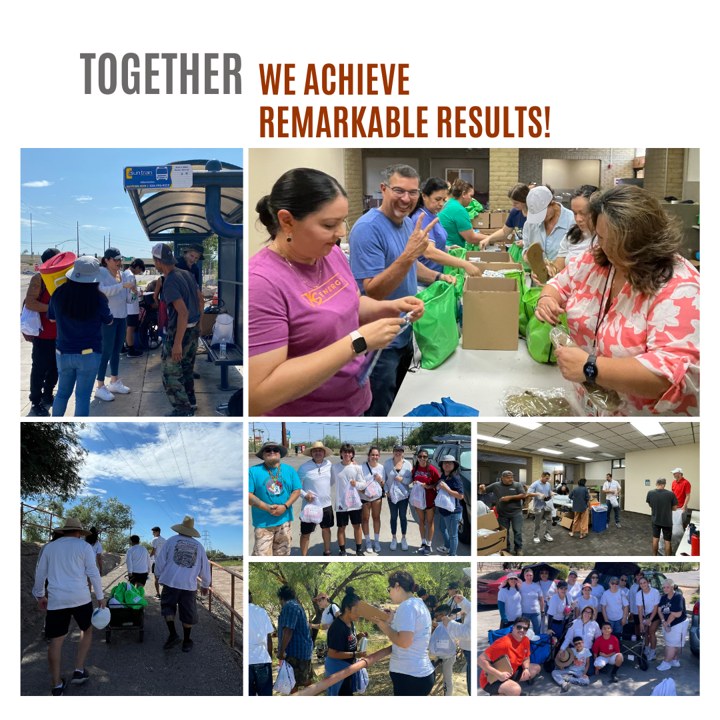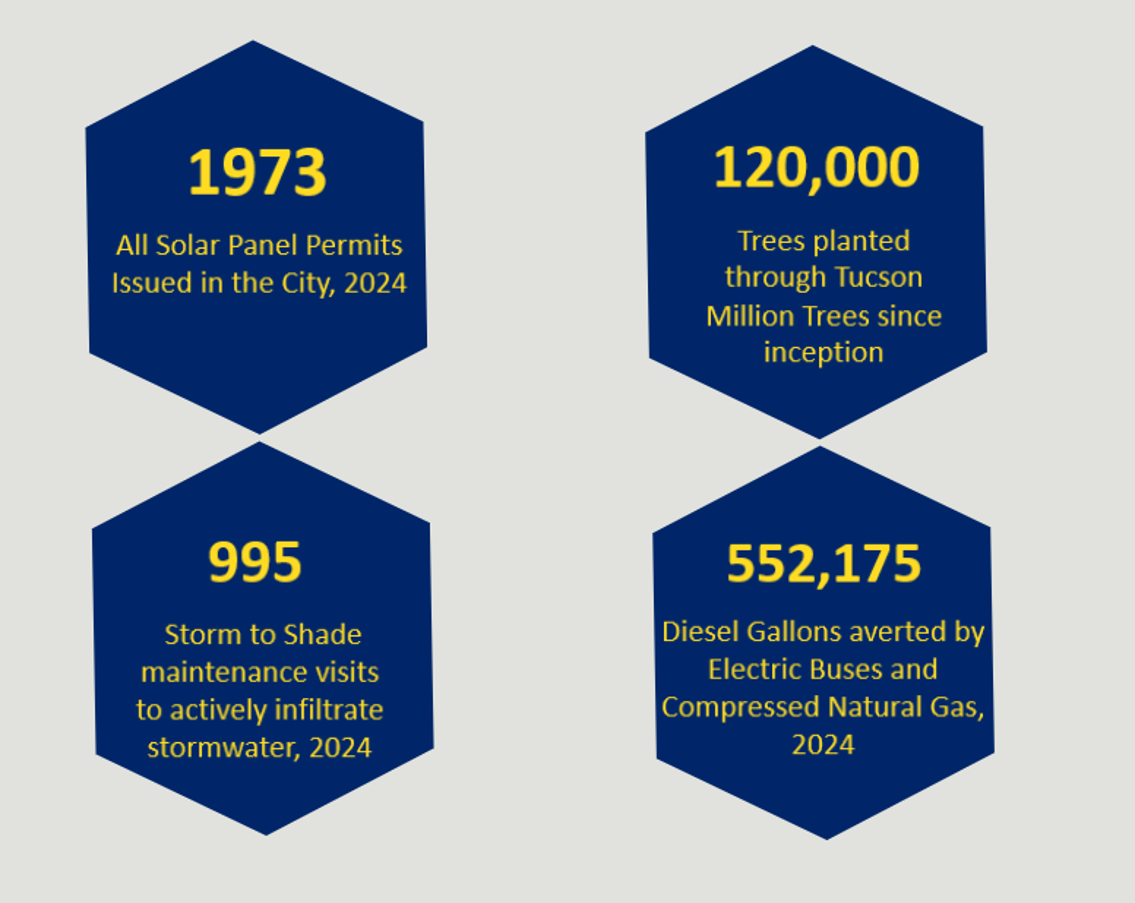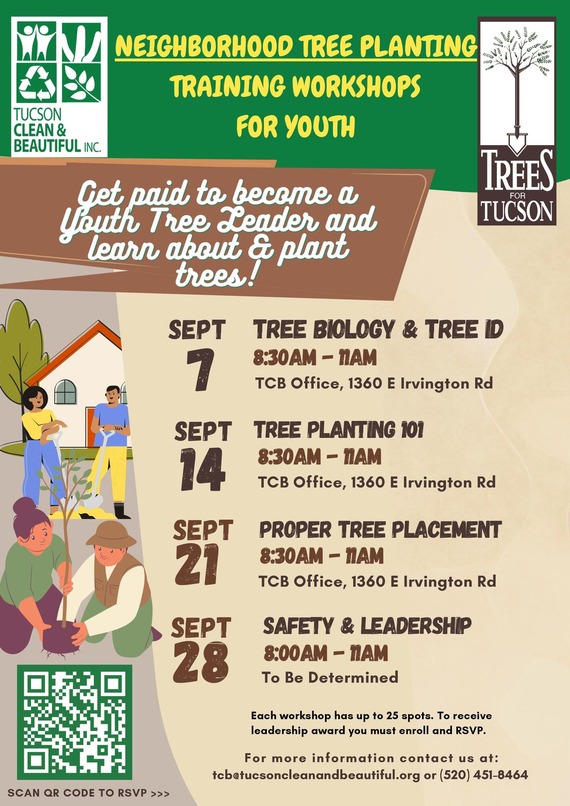|
Collaborative Efforts Drive Heat Relief in Tucson
As part of the City of Tucson’s commitment to climate resilience, the recently adopted Heat Action Roadmap is already making a significant impact through a concerted effort to support the unhoused community during the extreme summer heat. The Climate Action Team (CAT), in collaboration with various city programs, has spearheaded the distribution of heat relief kits, demonstrating the effectiveness of cross-departmental collaboration and community engagement.

This initiative is a collaborative effort involving the City of Tucson’s Housing First Program, the Community Safety, Health and Wellness Program, and the Azara Branch. Together, these organizations have distributed about 550 heat relief kits since July, each containing essential items such as reusable water bottles and water, cooling towels, sunscreen, and basic first aid supplies. These kits are designed to provide immediate relief and protection against the harsh effects of Tucson’s summer temperatures.
The success of this initiative is a clear example of the positive outcomes that can be achieved when various programs and groups work together towards a common goal. Particularly noteworthy is the leadership shown by youth members of the Azara Branch, who played a pivotal role in driving this project forward. Ava and Jewelya, two Tucson-based University of Arizona students, have been instrumental in organizing and executing the distribution of these kits, showcasing the vital role of youth leadership in addressing climate-related challenges.

Ava and Jewelya’s involvement is part of a broader trend of youth-led climate initiatives within Tucson. The concept for the heat relief kits emerged from discussions led by young leaders, who identified a critical need for resources to support vulnerable populations during the summer months. Despite the challenges posed by a shortage of student volunteers—many of whom leave Tucson during the summer—Ava and Jewelya successfully mobilized their families to support the effort. Their siblings assisted in assembling and distributing the kits, while their parents provided additional support at distribution events, transforming the initiative into a community-driven endeavor.
In addition to the contributions from these youth leaders and their families, many volunteers from the general public played an essential role in the success of the project. Faith-based groups, such as Open Heart and TEAM Choir, were particularly active in this effort. TEAM Choir will not only help with assembling and distributing kits, but they also generously purchased additional supplies to include in them, demonstrating the deep community commitment to supporting those in need during extreme weather events.
The project also benefited from substantial support from the City of Tucson’s Multidisciplinary Outreach Team (MDOT), the homeless outreach team, and the Community Safety, Health, and Wellness Program. These groups played an essential role in identifying distribution locations, assembling the kits, providing storage facilities, and ensuring the kits were delivered to those most in need. Additionally, the Mayor’s office provided ongoing support, emphasizing the importance of a unified approach in addressing the city’s climate resilience goals. External partners, such as the Pima County Health Department, were also key in providing informational resources and supplies for the kits.

This heat relief initiative highlights the collective power of community action in addressing the challenges posed by climate change. As the City of Tucson continues to implement its Heat Action Roadmap, this project serves as a model for future efforts, illustrating how coordinated action across city departments, community groups, and the broader public can result in meaningful outcomes. The leadership demonstrated by Tucson’s youth, the generosity of faith-based organizations, and the broad volunteer participation underscore the importance of a collaborative approach to building resilience in the face of increasing climate-related risks.
The Heat Action Roadmap is more than just a policy framework; it represents a commitment to tangible action that addresses the immediate needs of Tucson’s most vulnerable populations. Through the combined efforts of its public servants, community organizations, faith-based groups, and residents, Tucson is not only responding to the challenges of extreme heat but also laying the groundwork for a more resilient future.
|
|
How are we doing?
2024 Climate Action measurements from the City of Tucson.

Check this out.
Actions from around the community contributing to Tucson's climate resilience.
Since founding in 1985, Tucson Clean and Beautiful (TCB) has been at the forefront of sustainability efforts in our city. As a trusted partner of the City of Tucson, TCB has led initiatives in recycling, tree planting, and youth workforce development, leaving a lasting positive impact on our community.
Currently, TCB is recruiting for their Youth Tree Leaders Program, a dynamic initiative designed to empower young people to become environmental stewards. Participants will learn about the crucial role trees play in urban environments, get hands-on experience in tree planting, and develop leadership skills that will serve them and their communities well into the future.
If you know youth in your life—especially those living in Tucson’s environmental justice communities—this is an excellent opportunity for them to make a difference. Encourage them to apply and be part of a program that not only nurtures the environment but also cultivates the next generation of leaders in sustainability. Together, we can ensure that Tucson’s commitment to a greener future continues to flourish.

Register for the September Climate Stakeholder Conversation to learn about the progress of Tucson Resilient Together. This online event offers updates, opportunities to ask questions, and ways to get involved in our city's climate resilience efforts. Your participation is key to shaping Tucson’s sustainable future.
|
|
|
|
|